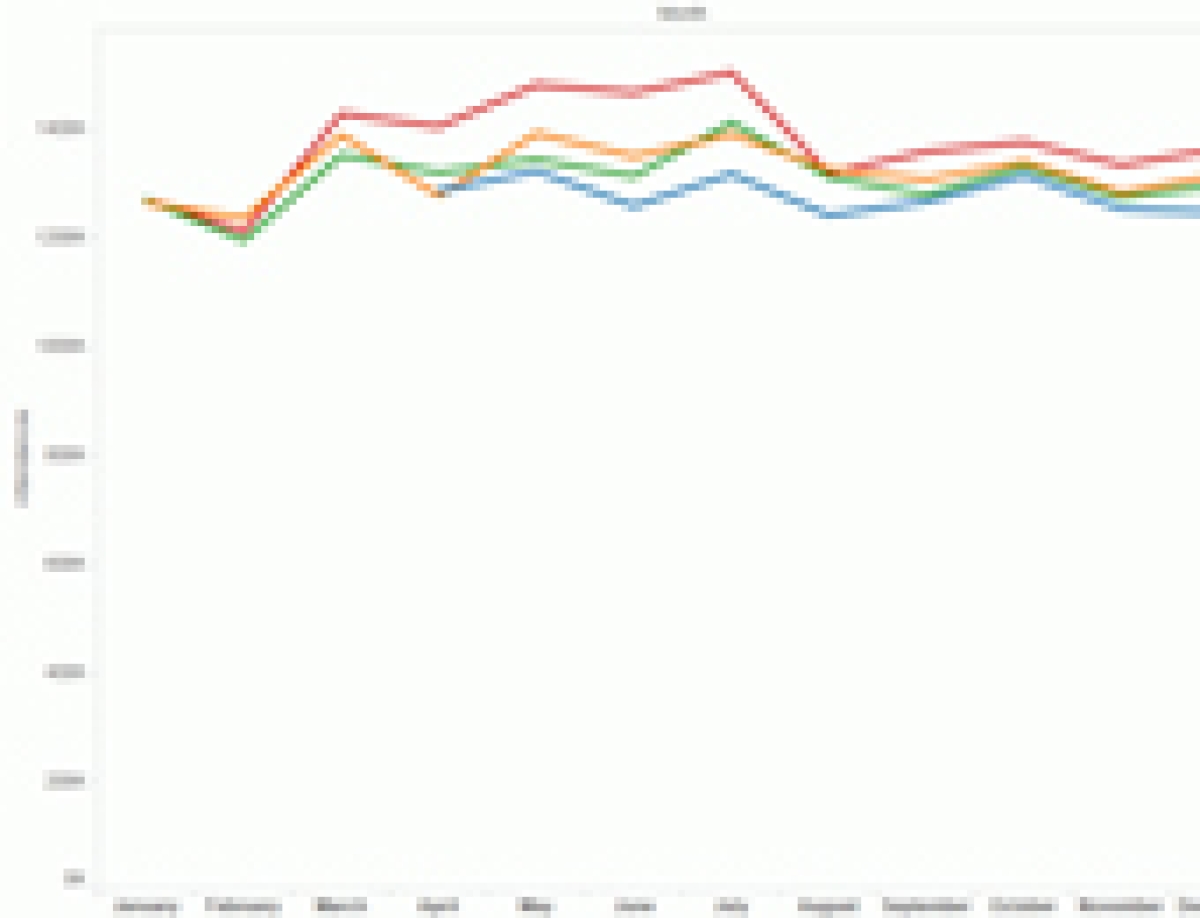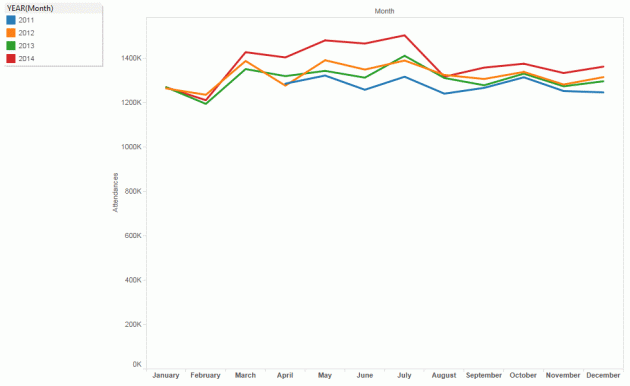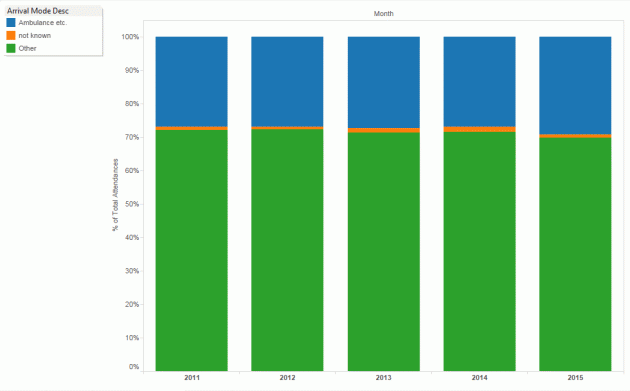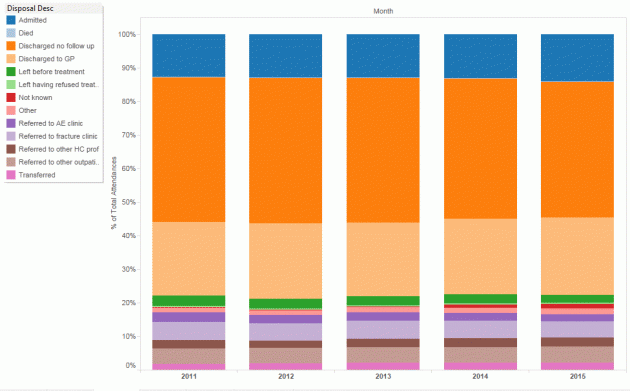
For years the NHS has grappled with winter pressures and the annual cycle of gearing up to cope with the spike in demand for urgent care services. The Department of Health and academics have spent time and effort trying to work out the underlying causes. Amongst those highlighted have been the weather, winter flu, norovirus and even Christmas itself. However, to date we have no conclusive evidence for the reason.
Although there is no denying previous spikes in demand every winter, the alarming evidence from 2014 data is that these short-lived spikes have now become an underlying trend throughout the year.
Using HES data we carried out an analysis of accident and emergency attendances from all sources for every month over the last four years. The analysis confirmed that in 2014 there was indeed a change in this trend of peak winter attendances.
Not only has there been an increase in the total number of accident and emergency attendances, the peak has been sustained beyond the winter months. Interestingly the data shows that the biggest peak is now in July.

Perhaps of greater concern is the significant rise in the volume of resulting admissions following accident and emergency attendances in 2014. This has inevitably had an impact on acute care capacity.

Given this upward trend, it is not surprising that clinicians have been vocal about the increased workload and the pressure on resources. Coupled with increasing financial strain, the questions is if this pressure continues to grow, remaining constant across the year and not short and cyclical as before, how can the system cope.
The answer must lie in examining existing pathways to and from A&E and asking whether this increased activity could be managed differently. For instance less than a third of patients attending accident and emergency are actually blue light emergencies arriving by ambulance (see chart 3). Since the majority arrive by themselves we should be taking a close look at this cohort to understand their treatment pathway post triage.

Chart 4 shows the discharge pathways for patients over the last four years. The consistent pattern between years demonstrates that very little has changed in the management pathway with only a small percentage of attenders (12 to 14 per cent) actually being admitted after an initial assessment.

The largest proportion (40 per cent) were discharged with no follow up required indicating their assessment led to either advice alone, or straightforward treatment. The second largest proportion (just over 20 per cent) were referred back to general practice.
Without further details of the underlying conditions it is unfair to claim they could all be managed differently, but given the number of patients involved there is a strong case to be made that significant numbers of these attendances could be managed differently with support provided by alternative lower cost resources than currently being delivered in the acute care settings.
There is more work to be done through commissioners and their acute providers in defining what the alternative models should be, but the biggest challenge will be to educate the public that accident and emergency should not be the default choice.
Jason Harries, Managing Director, CHKS
Our analysis contains HES data which is re-used with the permission of The Health & Social Care Information Centre. All rights reserved.For years the NHS has grappled with winter pressures and the annual cycle of gearing up to cope with the spike in demand for urgent care services.
 For years the NHS has grappled with winter pressures and the annual cycle of gearing up to cope with the spike in demand for urgent care services. The Department of Health and academics have spent time and effort trying to work out the underlying causes. Amongst those highlighted have been the weather, winter flu, norovirus and even Christmas itself. However, to date we have no conclusive evidence for the reason.
For years the NHS has grappled with winter pressures and the annual cycle of gearing up to cope with the spike in demand for urgent care services. The Department of Health and academics have spent time and effort trying to work out the underlying causes. Amongst those highlighted have been the weather, winter flu, norovirus and even Christmas itself. However, to date we have no conclusive evidence for the reason.


